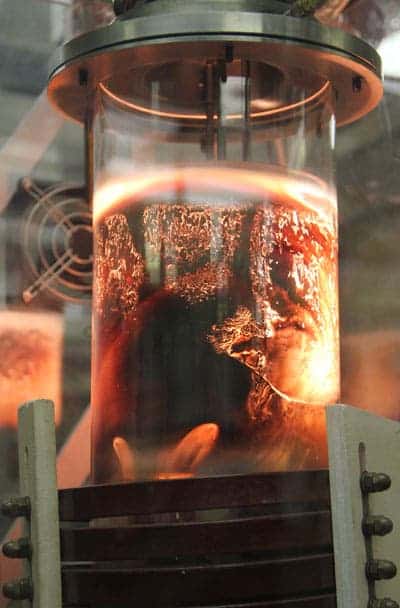When left in scarcity, the human mind has always been pressured to find a solution. In the past decade or so, the demand for rare earth metals has soured as ever expansive green technology required it. The problem however, is that not only do these metals come in short supply, but they’re actually controlled in their vast majority by China. Monopolies are bad for any market, and scientists at the U.S. Department of Energy’s (DOE) Ames Laboratory have managed to find a way to recycle rare earth materials from junk, and lean the balance a bit from China.
Most of these rare earth metals, known scientifically as lanthanides are almost exclusively controlled by China. That’s not to say that the world’s lanthanides deposits are exclusively underneath Chinese soil, far from it, even the US has quite a hefty batch of its own, however in order to operate a lanthanide mine one needs roughly 15 years to tap into these reserves. This tricky process and sheer financial investment scared most of the world’s governments away from dwelling into such a plan. China, however, started mining for rare earth metals since the 1980s. Today, they’re reaping the rewards – 95% to 100%, depending on the material, of the world’s lanthanides supply is controlled by China.
One could say that Chinese officials were struck by a moment of brilliant vision, since it took many, many years for technology to reach the level of material requirements it has today. Most of the lanthanides are destined nowadays towards the automotive industry, where they’re used in battery pack and electric motor of hybrids and EVs. This is where a rather ironic fact unfolds.
Electric vehicles started taking off recently because they represent a green solution (not that green actually) and lower the dependency of the market on oil. In the US at least, a third of its oil comes from unstable regions such as the middle east or Nigeria. Seeing how China exclusively control’s the world’s supply of lanthanides, electric vehicles are joined by a similar geopolitical risk as well. Soon enough the demand for rare earth metals will surplus the supply, and when this happens China will be free to raise the prices considerably.
Currently, 100,000 tons per year of lanthanides are manufactured and utilized, while there’s an estimate 99 million tons of rare earth metals available in total.
Recycling rare earth metals

Scientists at the Ames Laboratory are improving the process to reclaim
rare-earth materials.
The DOE project looked on refining an existing process for extracting neodymium, which is one of the most commonly used rare earth metal, while at the time being one of the rarest. Current pricing is at $150 per kilogram, and an estimated 8 million tones of neodymium deposits have been identified by prospectors.
In the 1990s, the Ames lab looked to extract neodymium from neodymium-iron-boron magnet scrap, using liquid magnesium. After twenty years however, the demand for the material has soured and thus a better process for extraction was required. The main problem, however, lied in whether the recycled neodymium would yield performance.
“We start with sintered, uncoated magnets that contain three rare earths: neodymium, praseodymium and dysprosium. Then we break up the magnets in an automated mortar and pestle until the pieces are 2-4 millimeters long,” said lead researcher Ryan Ott.
The pieces are then thrown in a mesh screen box, where magnesium chunks are later added. The mixture is heated via radio waves, until the magnesium, which has the lowest boiling point of the heterogeneous mix (650 °C), melts. “The iron and boron that made up the original magnet are left behind,” Ott goes on to describe the process.
The magnesium and rare earths combination is cast into an ingot and cooled. Finally, the magnesium is boiled off, leaving behind only the neodymium, praseodymium and dysprosium in a smaller ingot of pure rare earths. Subsequent testing reveals that the outputted rare earth metals compare favorably in performance with their unprocessed counterparts.
“We’re continuing to identify the ideal processing conditions. We want to help bridge the gap between the fundamental science and using this science in manufacturing. And Ames Lab can process big enough amounts of material to show that our rare-earth recycling process works on a large scale,” said Ott.
Quite possibly the same extraction method could be used for other rare earths. If so, then recycling could balance the market and in term lead to a more healthy growth for technology.
[source]



